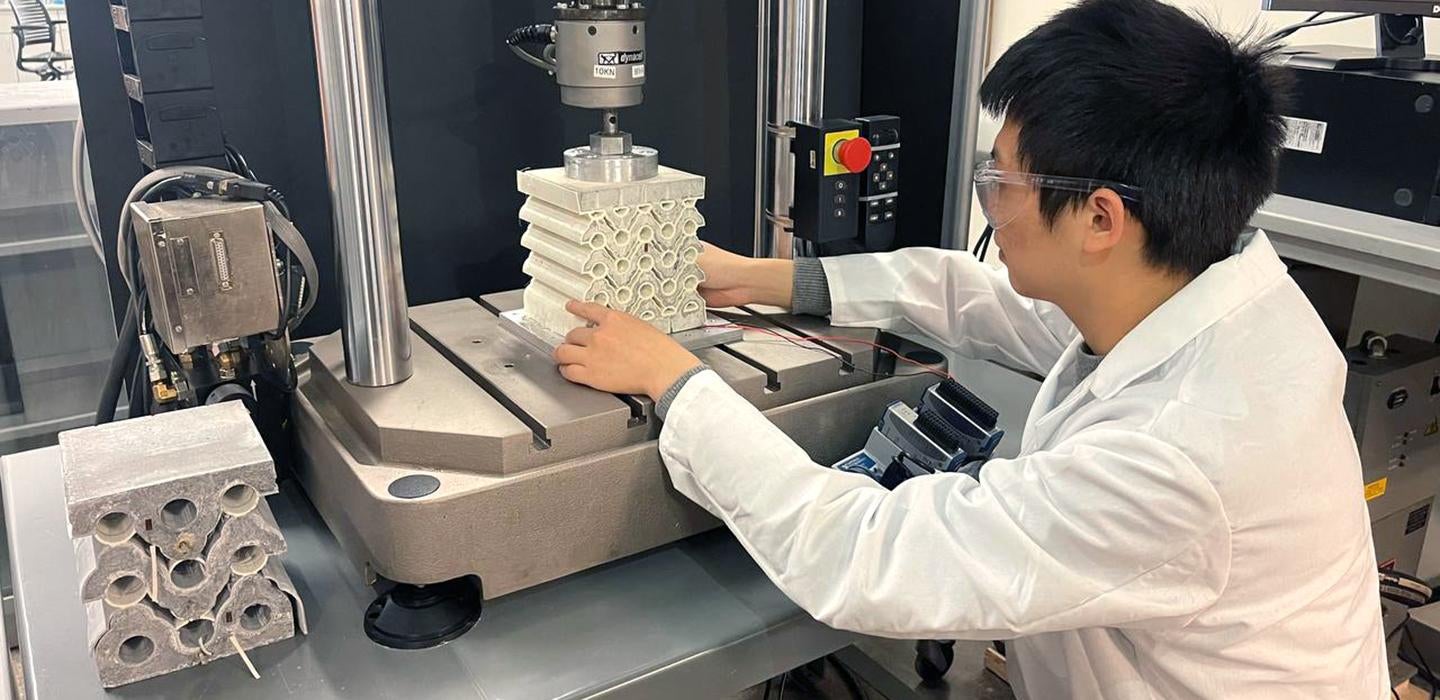
Subscribe to Pittwire Today
Get the most interesting and important stories from the University of Pittsburgh.Picture electrified tractor trailers wirelessly charging their batteries as they cruise through central Pennsylvania. Imagine Pennsylvania Turnpike walls that not only reduce noise pollution but vehicle emission pollutants, too. This and more could soon become reality thanks to a research grant from Pennsylvania Turnpike Commission to the University of Pittsburgh.
At its Oct. 4 meeting, the commission approved a $2.5 million agreement with Pitt’s Swanson School of Engineering to support four research projects aimed at bettering Pennsylvania’s roads.
The agreement, collectively known as the Mon-Fayette Climate Resistant Corridor, will be conducted through Pitt’s Impactful Resilient Infrastructure Science and Engineering (IRISE) consortium of which the Pennsylvania Turnpike Commission is a member. Michael Schultz, the Turnpike’s Strategic Planning and Program manager, is their representative within IRISE. The efforts will be led by Amir Alavi and Alessandro Fascetti, both in the Department of Civil and Environmental Engineering, with support from Daniel Bain in the Department of Geology, Kent Harries in civil engineering, and under the leadership of IRISE Director of Research Julie Marie Vandenbossche and Director Joe Szczur.
“We were looking for something that’s actually doable and not some pie-in-the-sky kind of thing,” said Vandenbossche. “This is the largest thing we’ve done through IRISE.”
The four projects all present a groundbreaking opportunity for not only the University of Pittsburgh and the turnpike, but also the Western Pennsylvania region as a whole.
IRISE Director Joe Szczur called the projects “the basis of where the IRISE consortium is heading. This is a good example of the kind of things we can do. These are the things [road designers] need. That’s the reason IRISE was created.”
Or as Vandenbossche put it, “This is when research becomes fun.”
Here are details on the four projects:
Electrified roadways
The first of the projects led by Alavi focuses on electrified roadway planning for the Pennsylvania Turnpike. A strategic plan will guide the agency’s investment decisions and policies in the coming years as electric vehicles (EVs) and dynamic wireless charging (DWC) technologies advance. This strategic plan will focus primarily on expanding in-road electric vehicle charging infrastructure for heavy-duty vehicles as the early adopters of the DWC technology, integration of distributed roadside renewable energy (solar and wind) generation and leveraging opportunities to drive private investment in EV charging. This plan will be updated every three years to help guide strategic investment and decision-making.
Noise cancellation and pollution reduction
The second of the projects is directed by Alavi and focuses on the use of concrete metamaterial to build walls with noise cancellation, as well as the ability to remove nitrogen oxides in the air. The small and large-scale metamaterial noise walls will be developed with Pitt’s concrete 3D printer. The goal will be to come up with a final design that can later be deployed for road demonstrations on a designated section of the Southern Beltway. Preliminary calculations suggest that using metamaterial walls with predominately open areas can result in hundreds of thousands of dollars in material cost savings alone in such turnpike projects. In addition to being cost-effective, they can potentially dissipate more than 90% of road noise and reduce nitrogen oxide pollutant levels to as low as 19%.
Harvesting energy
The third project, also led by Alavi, focuses on energy harvesting from sustainable geogrids made from recycled materials. One of the main pillars of a circular economy is the capacity to up-cycle waste streams for greater value and products. In the last 70 years, an estimated 6.3 billion tons of plastic have been produced worldwide. Less than 20% of this volume is being recycled or incinerated, and major volumes of plastic waste have entered the environment adding to other key sustainability concerns. The researchers propose to develop a first-of-its-kind smart geosynthetics in the form of geogrids made from waste plastic as the main component for enhancing the performance of pavement systems with asphalt and concrete overlays. The proposed solution harvests the energy from mechanical excitations caused by traffic and stores it using an energy harvesting kit for empowering roadside electronic devices.
Modeling the Mon-Fayette Expressway
The fourth team will be led by Fascetti, with support from Vandenbossche, Harries and Bain. The interdisciplinary project will create novel tools and workflows to construct a “digital twin” model of a selected portion of the upcoming Mon-Fayette Expressway. The model will interact with pavements, bridges and stormwater management utilities to create a holistic approach for resilience assessment, advanced visualization and risk-based operational maintenance of the expressway.
“It will definitely help to alert us to when problems are developing,” said Ed Skorpinski, an engineer project manager for the turnpike. “It won’t slow down what is happening. It will help to let us know when we should be paying attention.”
The ultimate goal is to enable quasi-real-time health monitoring of the complex and interdependent infrastructure system, allowing for operational control and rapid deployment of the results of the research.
— Nick France, photo of James Luo, a PhD student in Amir H. Alavi’s lab


